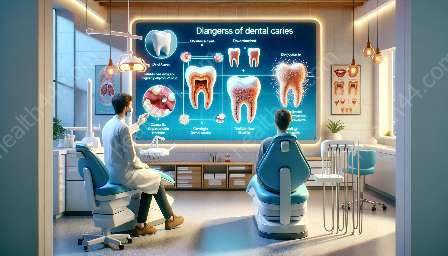Addressing oral health disparities and inequalities is a critical public health issue, as poor oral health can have significant social, economic, and health consequences. This topic cluster explores innovative approaches to addressing oral health disparities and inequalities, and delves into the effects of poor oral health, while providing strategies to improve oral health outcomes.
The Importance of Addressing Oral Health Disparities and Inequalities
Oral health disparities and inequalities refer to differences in the prevalence and severity of oral diseases and conditions among various population groups. These disparities are influenced by a range of factors, including socioeconomic status, race, ethnicity, geographic location, and access to dental care. In many communities, vulnerable and marginalized populations experience a disproportionate burden of oral health problems, leading to reduced quality of life and increased healthcare costs.
Effects of Poor Oral Health
Poor oral health can have far-reaching effects on an individual's overall well-being. It is associated with chronic conditions such as diabetes, heart disease, and respiratory illnesses. Additionally, untreated oral diseases can cause pain, difficulty eating, speech problems, and reduced self-esteem. From a social and economic perspective, poor oral health can lead to missed school or work days, reduced productivity, and financial strain due to the high cost of treating advanced oral diseases.
Strategies for Addressing Oral Health Disparities
Community-Based Outreach Programs: Community-based organizations and health agencies play a crucial role in addressing oral health disparities. By partnering with local communities, these programs can provide education, screenings, and preventive services to underserved populations.
Telehealth and Technology Integration: Telehealth and digital platforms have the potential to improve access to oral healthcare, particularly in remote and underserved areas. By leveraging technology, patients can connect with oral health professionals, receive virtual consultations, and access educational resources.
Oral Health Literacy Initiatives: Enhancing oral health literacy is essential for promoting preventive behaviors and empowering individuals to take control of their oral health. Targeted educational campaigns and resources can help improve knowledge about oral hygiene, nutrition, and the importance of regular dental care.
Promoting Equity in Oral Health Care
Cultural Competence Training: Healthcare providers should undergo training to understand and address the cultural and linguistic needs of diverse patient populations. By promoting cultural competence, providers can deliver more effective and patient-centered care.
Policy Advocacy and Reform: Advocacy efforts are vital for driving policy changes that address systemic barriers to oral healthcare access. This includes advocating for Medicaid expansion, reimbursement reform, and workforce development to increase the availability of culturally competent dental providers in underserved areas.
Research and Innovation in Oral Health
Novel Treatment Modalities: Ongoing research and innovation in the field of dentistry are paving the way for novel treatment modalities that are more cost-effective and accessible. This includes advancements in minimally invasive interventions, regenerative therapies, and the development of new dental materials.
Data-Driven Approaches: Utilizing data and analytics can help identify trends and disparities in oral health outcomes, leading to targeted interventions and resource allocation. By leveraging data, public health officials and policymakers can make informed decisions to reduce disparities and improve oral health equity.
Conclusion
Innovative approaches in addressing oral health disparities are essential for promoting equity and improving the overall oral health of communities. By implementing community-based outreach programs, leveraging technology, promoting cultural competence, advocating for policy reform, and fostering research and innovation, it is possible to make significant strides in reducing oral health disparities and inequalities. Through collaborative efforts and a multifaceted approach, we can work towards a future where everyone has access to quality oral healthcare and improved oral health outcomes.



